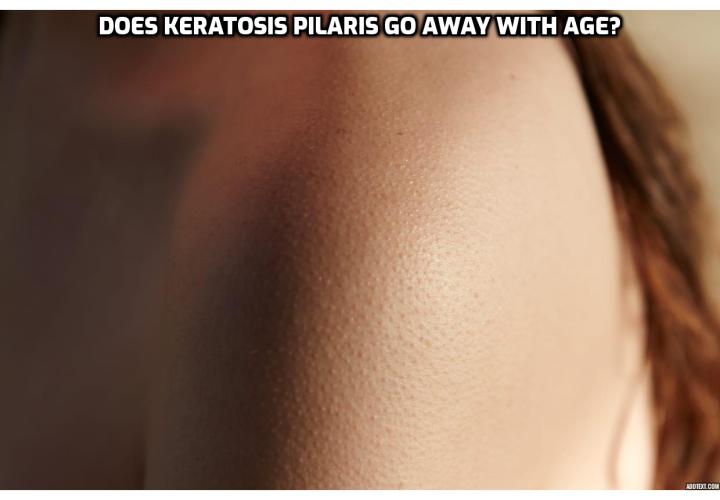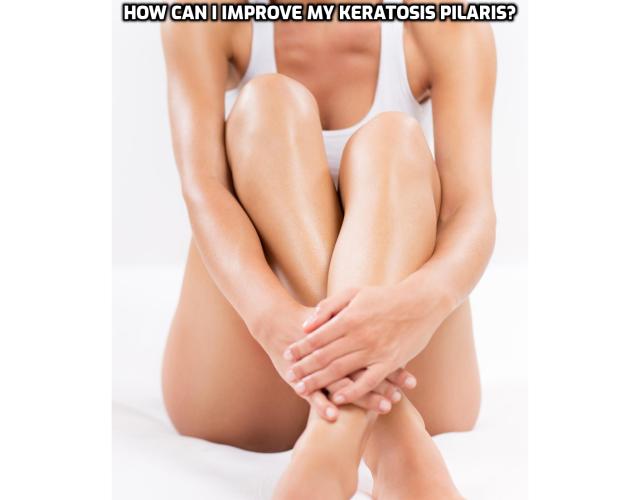Living
with Keratosis Pilaris - Where
Keratosis Pilaris Occurs
Many
people have experienced the trademark "chicken skin" symptoms of keratosis pilaris at some point in their lives. Keratosis pilaris is a common condition that
involves the formation of tiny, rough bumps in collected areas on the body.
These
bumps are spread in patches along the surface of the skin. The areas affected
by keratosis pilaris are usually scattered across the
body, but they generally are located along the back of the upper arms, the
front of the thighs, and the buttocks.
Generally, keratosis pilaris can affect all skin surfaces
that have hair growth. If an area of skin does not have hair growth-such as the
mouth, eyes, palms, and soles-it will not be affected. Although keratosis pilaris commonly occurs on the arms,
thighs, and buttocks, it can also affect convex areas such as the cheeks. The
upper back may also experience the effects of keratosis pilaris, but this is fairly uncommon.
Rare variants of keratosis pilaris can also spread to the eyebrows,
face, scalp, or even the entire body.
Generally,
anywhere from 10 to hundreds of tiny, rough bumps are scattered in an affected
area. Sometimes, however, keratosis pilaris may be limited to individual,
scratchy bumps. Bumps may grow inflamed and lead to scarring, especially if
they are located on the face. Some patients also experience itching or redness
in affected skin areas, especially if the skin becomes dry or is exposed to
harsh weather.
Moisturizing
your skin regularly and exfoliating with a gentle, soap-free cleanser can often
improve the look and feel of keratosis pilaris. Because keratosis pilaris is relatively harmless and has
few complications, medical treatment is not usually necessary.
If
you are concerned about the appearance of your skin, or if you think areas of
your skin may be becoming inflamed or irritated, consult your doctor or a
dermatologist. He or she can provide an accurate diagnosis based on your
symptoms and guide you through the best treatment options.
Additionally,
your doctor or dermatologist can suggest other at-home remedies like installing
a humidifier in your home and can provide prescriptions to limit the effects of
keratosis pilaris.
Living with
Keratosis Pilaris - Who Can Be Affected by Keratosis Pilaris?
As
an inherited skin condition, keratosis pilaris involves the formation of small,
rough bumps on the surface of the skin. These bumpy areas are created by the
buildup of a protective skin protein called keratin, which causes these tiny
bumps to form in collective areas. Individuals with keratosis pilaris can
belong to a variety of ages and ethnic groups, as this disorder is common noted
among all populations.
Keratosis pilaris can affect any person at any
age. In general, the condition initially appears during the first 10 years of a
person's life. Some patients do not experience keratosis pilaris in childhood,
however, but are diagnosed after puberty. Women seem to be affected more often
than men, but this condition can improve or even disappear with age.
Keratosis pilaris may worsen during puberty, but often
improves as a person reaches adulthood. Additionally, keratosis pilaris is most
common in people of Celtic origin or among those who have another skin
condition such as eczema or ichthyosis. Elderly people, however, rarely
experience this disorder.
Nearly 50% to 80% of all adolescents are
affected by keratosis pilaris, in addition to approximately 40% of all adults.
The symptoms of keratosis pilaris generally worsen during the winter and other
dry seasons due to the relative lack of moisture, but it can improve in the
summer and warmer seasons when humidity is higher. For many women with
keratosis pilaris, these symptoms can often become worse during pregnancy or
after childbirth as well.
If members of your family have experienced
keratosis pilaris, you have a higher risk of manifesting this condition. An
estimated 30% to 50% of patients have a positive family history of keratosis
pilaris. Although the disorder has a genetic association, it is not at all
contagious and is therefore not spread by touch.
If you are experiencing concern or discomfort because of
keratosis pilaris, see your doctor for an exam. He or she may suggest that you
implement several at-home remedies such as regular exfoliation and using a
humidifier; in more severe cases, topical corticosteroids or clinical-strength
moisturizers may be prescribed to reduce inflammation and promote healthy
skin-cell turnover.
Watch
this video - Living with Keratosis Pilaris - HOW TO TREAT & REDUCE
CHICKEN SKIN (KERATOSIS PILARIS) IN 10 EASY WAYS
This post is from the Keratosis Pilaris Remedy
program created by Alison White. Keratosis
Pilaris Remedy program is a step by step natural system through which
you can achieve a smoother and clearer skin in the shortest possible time. It
comes with a confidence-boosting skin cleanse that will help you in getting rid
of the Keratosis Pilaris condition.
You
will also get a recipe for a home-made face scrub with this product that is not
only very affordable to make, but also offer much more benefits as compared to
the expensive products available in the market.
The
author (Alison White) has also included her special Keratosis Pilaris diet
plan that includes some basic foods and make your skin to reborn and glow up
like your younger days.
Furthermore,
you will get the important information about the special ingredients that you
should consider while buying any skin product. These ingredients can be proved
very useful in eliminating the Keratosis Pilaris permanently.
To
find out more about this program, visit Keratosis
Pilaris Remedy Forever

